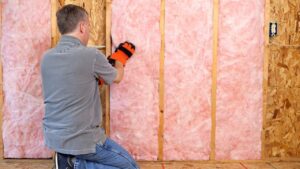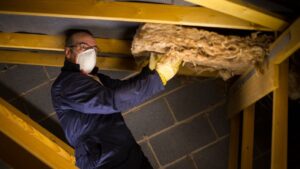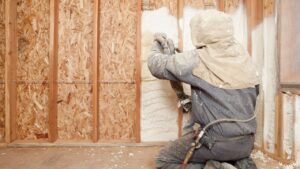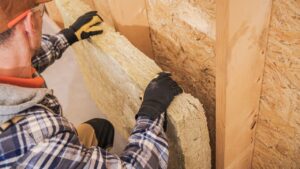As the crisp breeze of fall heralds the approach of colder months, our thoughts naturally turn towards maintaining a warm and comfortable home environment. With the assistance of modern technology and expert craftsmanship, insulation has become the unsung hero in the battle against winter’s chill. In this comprehensive exploration, we delve deeper into the science of heat transfer and unravel the mysteries of how insulation works to keep your home cozy, even in the harshest of temperatures.
Whether you’re considering insulation contractors in Virginia Beach or upgrading your attic insulation in Virginia Beach, understanding the principles behind heat transfer can help you make informed decisions about your home’s insulation needs.
1. The Basics of Heat Transfer: A Primer
Before we plunge into the intricacies of insulation, it’s crucial to grasp the fundamentals of heat transfer. Heat naturally moves from areas of higher temperature to those of lower temperature. This movement is driven by the laws of thermodynamics, which govern how heat behaves in various mediums. There are three primary modes of heat transfer: conduction, convection, and radiation.
(i). Conduction:
Conduction involves the direct transfer of heat through materials. Think of it like a metal spoon getting warm when placed in hot soup. The heat travels from the hot soup to the spoon, making the spoon itself feel warm.
(ii). Convection:
Convection is the movement of heat through fluids, which include both liquids and gases. This process creates currents that distribute warmth. For example, when you heat a pot of water on the stove, the hot water rises to the top, creating a circulation of heat.
(iii). Radiation:
On the contrary, radiation encompasses the release of electromagnetic waves. This is how the sun’s rays reach us and warm the Earth. Unlike conduction and convection, radiation doesn’t require a medium to transfer heat – it can travel through the vacuum of space.
2. The Role of Insulation in Temperature Regulation
Now that we’ve laid the foundation of heat transfer, let’s dive into the role of insulation in temperature regulation. Insulation acts as a barrier to inhibit the movement of heat, thus regulating the temperature inside your home. By impeding the transfer of heat through conduction, convection, and radiation, insulation helps maintain a comfortable indoor climate regardless of external weather conditions.
When you have effective insulation in place, your home becomes a haven where the temperature remains relatively stable. During the winter, the insulation prevents the warmth generated by your heating system from escaping outside. Similarly, in the scorching summer, it prevents the external heat from infiltrating your living space. This not only keeps you comfortable but also significantly reduces the strain on your heating and cooling systems, translating to energy savings.
3. How Insulation Works: The Science Unveiled
With the basics of heat transfer and the role of insulation in mind, let’s take a closer look at how insulation materials actually work. Insulation materials are chosen based on their ability to resist heat transfer. They have low thermal conductivity, which means they don’t easily allow heat to flow through them. Common insulation materials include fiberglass, cellulose, foam, and mineral wool.
These materials are strategically installed in various parts of your home, including walls, floors, ceilings, and attics. The idea is to create a continuous thermal barrier that prevents the easy movement of heat. Attic insulation, in particular, plays a vital role in heat retention, as heat naturally rises. In fact, if you’re considering attic insulation in Virginia Beach, you’re taking a proactive step toward ensuring optimal energy efficiency and coziness.
4. The Importance of Proper Installation
Selecting the right insulation material is only half the battle won. Proper installation is equally crucial to maximizing the effectiveness of insulation. Even the best insulation material can underperform if it’s not installed correctly. This is where insulation contractors in Virginia Beach come into play.
Trained professionals understand the unique characteristics of each insulation material and how they interact with different structures. They are skilled in identifying potential problem areas, ensuring a seamless and airtight insulation layer. Gaps, compressed insulation, and poor seals can significantly diminish the insulation’s efficiency. With the expertise of insulation contractors, you can be confident that your home’s insulation will deliver on its promise of coziness and energy efficiency.
5. Upgrading Attic Insulation in Virginia Beach: A Wise Investment
For residents of Virginia Beach, where the weather can swing from sweltering summers to chilly winters, investing in upgrading attic insulation is a wise decision. Attics are notorious for being a major source of heat loss. As warm air naturally rises, an inadequately insulated attic can result in substantial energy loss. By fortifying your attic’s insulation, you create a robust barrier against heat transfer.
With attic insulation in Virginia Beach, you’re not just enhancing your home’s energy efficiency. You’re also taking a step towards improving your overall living environment. Consistent indoor temperatures mean you can enjoy cozy winters without the need to constantly crank up the heat or bundle up in layers.
Conclusion: Harnessing the Science for Cozy Comfort
In conclusion, the science of heat transfer provides the foundation for understanding how insulation works to keep your home cozy. With the aid of insulation contractors in Virginia Beach, you can ensure a well-insulated living space that is resilient against the temperature fluctuations of the seasons. Remember that the attic insulation in Virginia Beach is a key focal point, where optimal insulation can make a remarkable difference in your home’s energy efficiency and overall comfort. So, as you contemplate maintaining a warm haven for your family, embrace the science behind insulation and make informed choices to enjoy a snug and energy-smart home.









